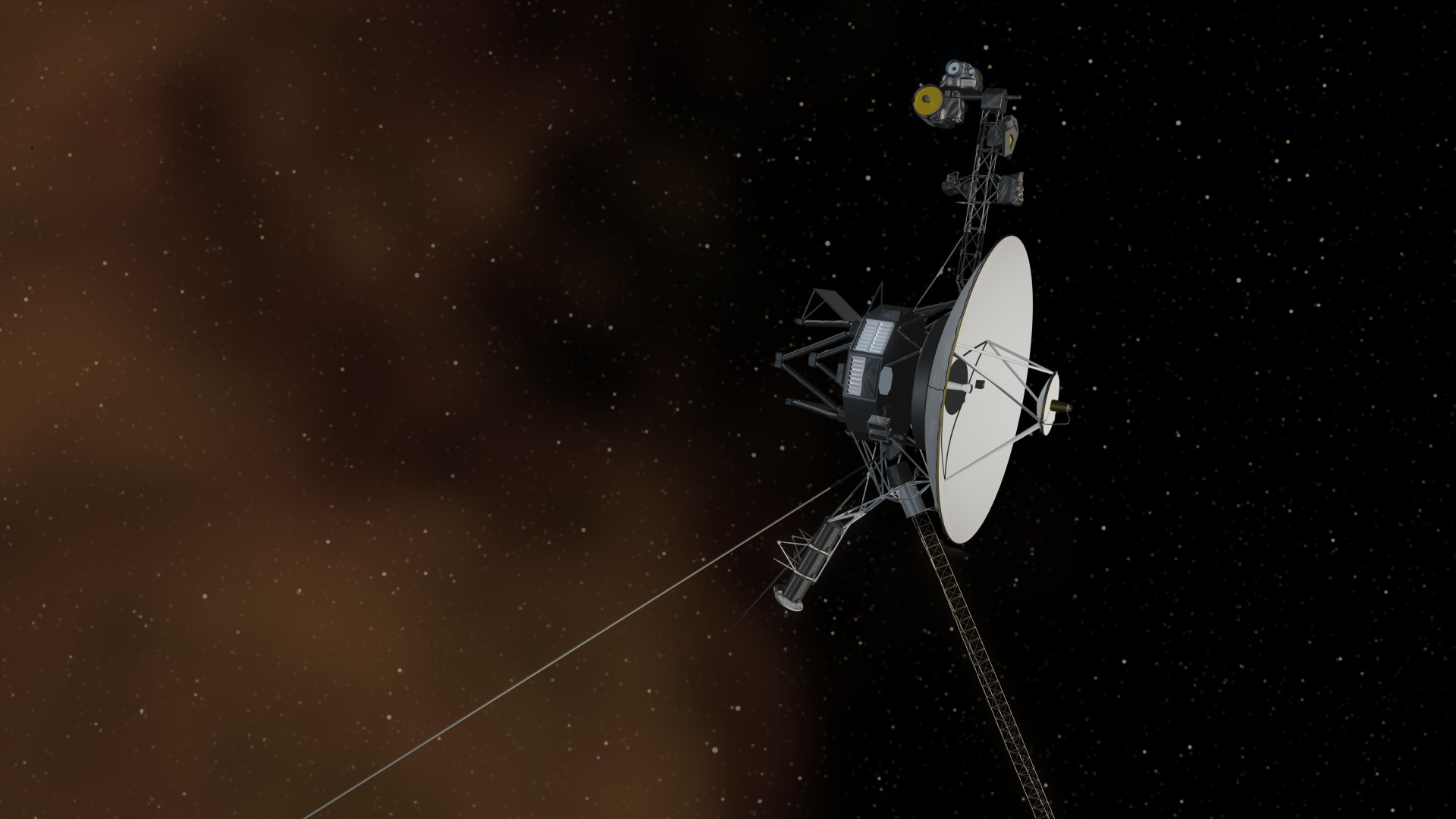NASA's Voyager 1 sends readable message to Earth after 4 nail-biting months of gibberish
After four months of being unable to detect comprehensible data from the Voyager 1 spacecraft, NASA scientists have had fresh luck after sending a "poke."

After a nail-biting four months, NASA has finally received a comprehensible signal from its Voyager 1 spacecraft.
Since November 2023, the almost-50-year-old spacecraft has been experiencing trouble with its onboard computers. Although Voyager 1, one of NASA's longest-lived space missions, has been sending a steady radio signal to Earth, it hasn't contained any usable data, which has perplexed scientists.
Now, in response to a command prompt, or "poke," sent from Earth on March 1, NASA has received a new signal from Voyager 1 that engineers have been able to decode. Mission scientists hope this information may help them explain the spacecraft's recent communication problems.
"The source of the issue appears to be with one of three onboard computers, the flight data subsystem (FDS), which is responsible for packaging the science and engineering data before it's sent to Earth by the telemetry modulation unit," NASA said in a blog post Wednesday (March 13).
Related: NASA's 46-year-old Voyager 1 probe is no longer transmitting data
On March 1, as part of efforts to find a solution to Voyager 1's computer issues, NASA sent a command to the FDS on the spacecraft, instructing it to use different sequences in its software package, which would effectively mean skirting around any data that may be corrupted.
Voyager 1 is more than 15 billion miles (24 billion kilometers) from Earth. This means any radio signals sent from our planet take 22.5 hours to reach the spacecraft, with any response taking the same time to be picked up by antennas on Earth.
Sign up for the Live Science daily newsletter now
Get the world’s most fascinating discoveries delivered straight to your inbox.
On March 3, NASA detected activity from one section of the FDS that differed from the "unreadable data stream" they'd previously been receiving. Four days later, engineers started the heavy task of trying to decode this signal. By March 10, the team discovered that the signal contained a readout of the entire FDS memory. This included the instructions for what the FDS needed to do, any values in its code that can be changed depending on commands from NASA or the spacecraft's status, and downloadable science or engineering data.
Voyager 1 has ventured farther from Earth than any other human-made object. It was launched in 1977, within weeks of its twin spacecraft, Voyager 2. The initial aim of the mission was to explore Jupiter and Saturn. Yet after almost five decades, and with countless discoveries under their belts, the mission continues beyond the boundaries of the solar system.
NASA scientists will now "compare this readout to the one that came down before the issue arose and look for discrepancies in the code and the variables to potentially find the source of the ongoing issue," they said in the blog post.
However, NASA stressed that it will take time to determine if any of the insights gained from this new signal can be used to solve Voyager 1's long-standing communication issues.

Emily is a health news writer based in London, United Kingdom. She holds a bachelor's degree in biology from Durham University and a master's degree in clinical and therapeutic neuroscience from Oxford University. She has worked in science communication, medical writing and as a local news reporter while undertaking NCTJ journalism training with News Associates. In 2018, she was named one of MHP Communications' 30 journalists to watch under 30. (emily.cooke@futurenet.com)









